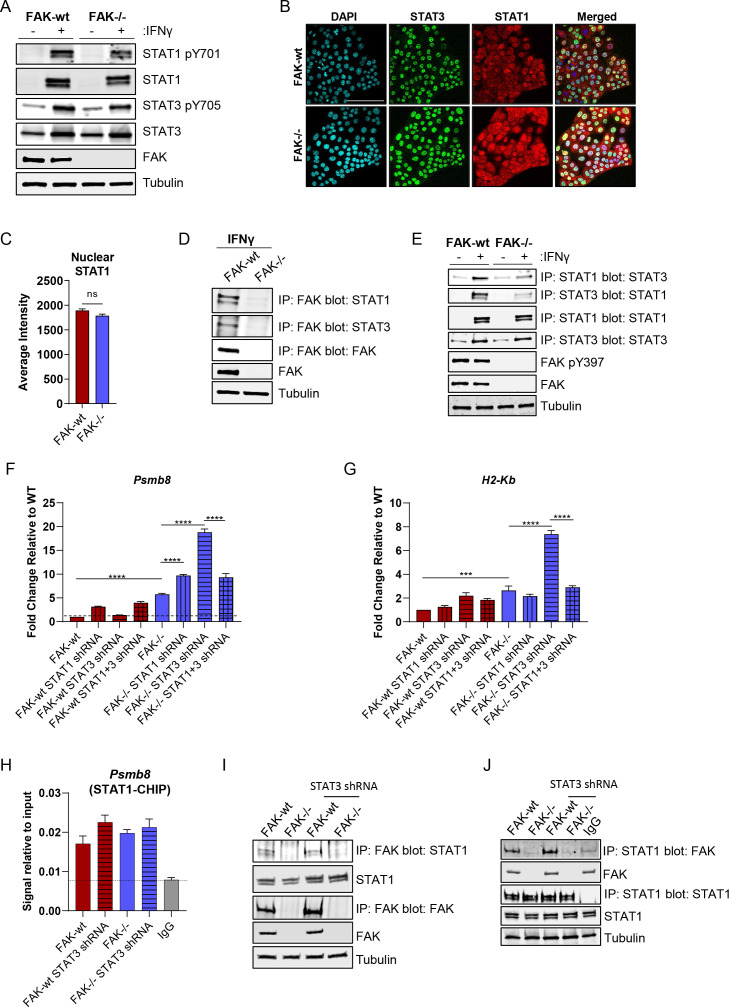Figure 5.
FAK and STAT3 impair STAT1-dependent expression of Psmb8 and H2-Kb. (A) Representative western blot of STAT1 pY701, STAT1, STAT3 pY705, STAT3 and FAK expression in FAK-wt and FAK-/- cells±stimulation with IFNγ. Anti-tubulin used as a loading control. (B) Representative confocal fluorescence images of IFNγ treated FAK-wt and FAK-/- cells stained with DAPI, anti-STAT3 antibody and anti-STAT1 antibody. Scale bar=100 µm. (C) Quantification of nuclear anti-STAT1 immunofluorescence staining from 5000 FAK-wt and FAK-/- cells treated with IFNγ. (D) Representative western blot showing anti-FAK IP blotted with either anti-STAT1, anti-STAT3 or anti-FAK antibodies. Anti-tubulin used as a loading control. Cells were stimulated with IFNγ. (E) Representative western blot showing anti-STAT1 and anti-STAT3 IPs blotted with either anti-STAT1 or anti-STAT3 antibodies. Anti-FAK and anti-FAK pY397 were used to confirm FAK expression and activation, respectively, and anti-tubulin used as a loading control. Cells±stimulation with IFNγ. (F) Relative quantification of Psmb8 gene expression using qRT-PCR following stimulation with IFNγ. n=3. (G) Relative quantification of H2-Kb gene expression using qRT-PCR following stimulation with IFNγ. n=3. (H) Relative quantification of STAT1-Psmb8 promoter binding using anti-STAT1 chromatin immunoprecipitation (CHIP) and Psmb8 promoter-specific qRT-PCR from cells treated with IFNγ. n=3. (I) Representative western blot showing anti-FAK IP blotted with anti-STAT1 antibody in whole cell lysates from cells treated with IFNγ. (J) Representative western blot showing anti-STAT1 IP blotted with an anti-FAK antibody from whole cell lysates isolated from cells treated with IFNγ. IFNγ treatment was 10 ng/mL for 24 hours. Data in (C, F, G, H) represented as mean±SEM. Statistical significance in (F, G, H) calculated using a one-way ANOVA with Tukey’s multiple comparison test. ***p≤0.001, ****p≤0.0001. Statistical significance in C calculated using an unpaired two-tailed t-test. ANOVA, analysis of variance; FAK, focal adhesion kinase; IP, immunoprecipitation.

